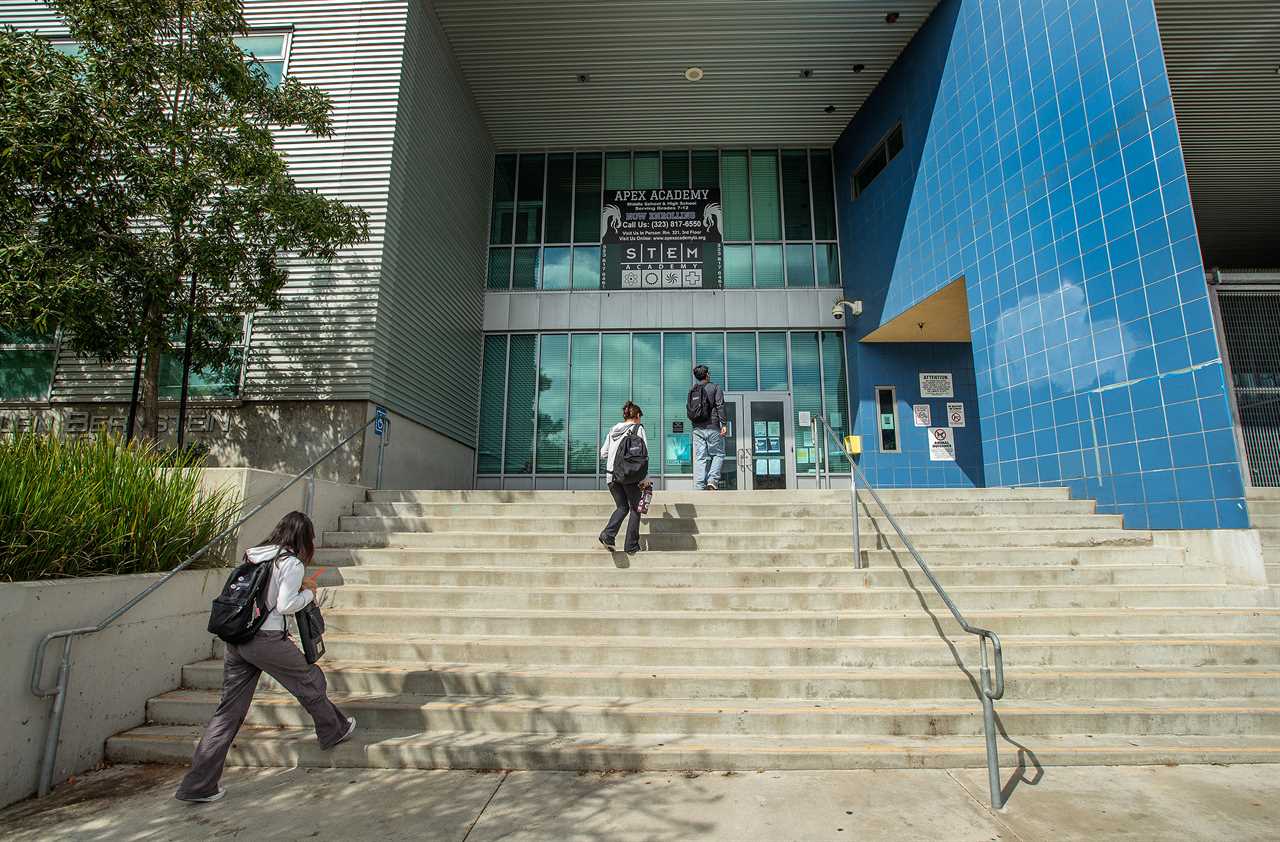
Fentanyl’s toll now includes a growing number of children.
Desperate to keep the deadly synthetic opioid out of the hands of kids, Texas lawmakers enacted Tucker’s Law this summer to launch an education campaign about its dangers in middle and high schools.
A world away politically, California lawmakers are considering Melanie’s Law, which would require schools to tackle opioid overdoses in their safety plans.
Both measures are named for teenagers who are part of a rapidly swelling group: children dying of fentanyl overdoses. State and federal lawmakers and health officials, overwhelmed by the magnitude of the opioid crisis, are struggling to adjust to the increasing range of its victims.
States enacted more than 100 laws during their 2023 legislative sessions seeking to raise awareness, increase penalties for dealers and prevent overdoses. Some focus on the danger the drug poses to young people.
Mississippi enacted a bill in March mandating a media campaign aimed at youth. California lawmakers are also considering requiring the state health department to make an overdose reversal drug available in schools. The bill cites 224 teens that died in California in 2021.
Since Congress passed landmark opioid-fighting legislation in 2018, the number of fatal overdoses has shot up by 64 percent, from about 67,000 to nearly 110,000 last year. At least 1,800 teens died between July 2019 and December 2021 from taking fentanyl, a 182 percent increase compared to the previous period, according to the most recent data from the Centers for Disease Control and Prevention.
And there’s little sign the problem is abating with early CDC data this year showing a plateauing of overall fatal overdoses near all-time highs.
“There’s not enough prevention in schools. Resources are lacking for all types of substance use,” said Sara Lowry, a middle school social worker in northern Virginia whose 17-year-old son, Aiden, died of a fentanyl overdose in December.

Tucker’s Law will provide for fentanyl education for children in grades 6 to 12 across Texas. The bill was a result of advocacy by Texas Against Fentanyl, a nonprofit founded by Stefanie Turner, whose 19-year-old son Tucker died in 2021 from a fentanyl overdose.
Melanie’s Law, making its way through the California legislature, is named after Melanie Ramos, a 15-year-old who died from a suspected fentanyl overdose last September at a Hollywood high school.
“What we all know is that the school-age demographic is getting hit the hardest with this; it’s causing one in five youth deaths in California right now,” said Democratic state Sen. Dave Cortese, the bill’s sponsor.

In Congress, two Coloradoans in the House, Republican Doug Lamborn and Democrat Joe Neguse, introduced in July their Protecting Kids from Fentanyl Act. It would permit states to use money from a $146 million federal grant to educate children and provide training and the opioid overdose reversal drug naloxone to school employees.
“One study that we looked at tells us that only 30 percent of overdose deaths had any evidence that Narcan was administered,” Lamborn said of the brand name for naloxone. That means there’s an opportunity to save lives if more naloxone is made available and more adults are trained to recognize an overdose and act, he said.
Parents and public health experts say increasing rates of mental illness in children, combined with the ease with which kids can buy pills online, is proving deadly. They say more needs to be done, including increasing the number of facilities and health care professionals who can treat teenagers with opioid use disorder since the few that exist are overwhelmed by demand.
“As this epidemic has grown, we’re seeing more of a need and more of a focus on adolescent services,” said Emily Keller, the special secretary of opioid response for Maryland Democratic Gov. Wes Moore.
Maryland has only three providers specializing in adolescent substance use disorder treatment, and only one of them accepts Medicaid, she said. State authorities are considering using some of the $400 million Maryland will get over the next 18 years from settlements with companies that pushed prescription opioids on expanding adolescent treatment services, she said.

Lockdowns and social media
Lowry blames school closures for tipping her son into addiction.
Aiden had long dealt with anxiety and was being treated for it when schools closed due to the Covid pandemic in 2020. He started vaping and using marijuana to deal with the isolation and by late 2021 was taking Percocet, the brand name for the opioid oxycodone, Lowry recounted.
He bought his first drugs on Snapchat. Soon he was unwittingly taking fentanyl, she said. Testing revealed that the Percocet was laced with the synthetic opioid.
“When you have kids feeling lost, losing their connection, then they might creep into other stuff,” Lowry said.
The pandemic brought a worsening youth mental health crisis that policymakers are only beginning to grapple with.
It came as demand for mental health and substance use services was already rising —about 20 percent of children ages 3 to 17 had a reported mental, emotional, developmental or behavioral disorder before the pandemic, according to the CDC.
Now it may be more than double that. More than 40 percent of high school students responding to a 2021 CDC survey said they felt so sad or hopeless they could not engage in their regular activities for at least two weeks during the previous year.

Looking for causes, researchers have cited the growing use of social media, limited access to mental health care and broader stressors such as rising income inequality, racism, gun violence and climate change.
Surgeon General Vivek Murthy earlier this year told POLITICO he supports age restrictions for social media.
The websites and apps make it so easy for teens to buy drugs that Drug Enforcement Administration Administrator Anne Milgram has called these online platforms drug-dealing “super highways.”
“Our kids are being deceived. We’re being deceived,” said Texas Against Fentanyl’s Turner at an America First Policy Institute event in Washington, D.C., this summer. “We don’t understand how strong fentanyl is, how it changes the chemistry of the brain, how it causes this flood of dopamine and then those kids use it again.”

Lack of treatment options
Eva, a Black woman in her early 20s, started taking Xanax in high school to calm her anxiety and soon became addicted to the fentanyl it was laced with. She did not provide her last name out of privacy concerns.
“My parents did everything right and it still happened to me,” Eva said, sitting in the gym of National Capital Treatment and Recovery in Arlington, Va., in May, during a visit by Sen. Tim Kaine (D-Va.). The organization is a nonprofit providing substance use care in the Washington area.
Kaine spoke about his bill to declare fentanyl a national security threat, which was included in the National Defense Authorization Act for 2024 that Congress will likely pass this fall.
But he acknowledged that more should be done to prevent people from using drugs and to get them treatment when they do. Kaine is also working on a bill to expand the number of peer support specialists who can help patients through substance use disorder recovery.

Treating minors with substance use disorder, however, is a lot more challenging than treating adults because providers bear greater burdens in ensuring the patients are kept safe, National Capital Treatment and Recovery President Deborah Taylor said in an interview.
“With the impulsivity of the kids, if they don’t like something you say, they’re going to walk out,” she said.
Her organization used to run a residential program for teens but stopped due to the challenges, she said.
“Everything is for adults. Where is the support for the children?” Lowry asked.
Onlya quarter of facilities providing adolescent treatment for substance use offer medication treatment, such as buprenorphine that helps wean patients off fentanyl. That’s compared to two-thirds of adult treatment facilities, according to a recent study by Oregon Health & Science University researchers.
“Aiden was begging for treatment,” Lowry said of her son.
After multiple dead ends, she found one substance abuse psychiatrist who could see him, but only three months later.
He never made it to the appointment.
He died in his room around midnight on Dec. 3, after taking a fentanyl-laced pill. The police are still trying to find the person who sold it to him.
----------------------------------------
By: Carmen Paun
Title: Fentanyl is killing record numbers of teens. Government is playing catch up.
Sourced From: www.politico.com/news/2023/08/30/fentanyl-killing-teens-government-00112729
Published Date: Wed, 30 Aug 2023 03:30:00 EST
Did you miss our previous article...
https://consumernewsnetwork.com/politics-us/elizabeth-warren-gets-a-major-concession-from-bidens-nih-selection






